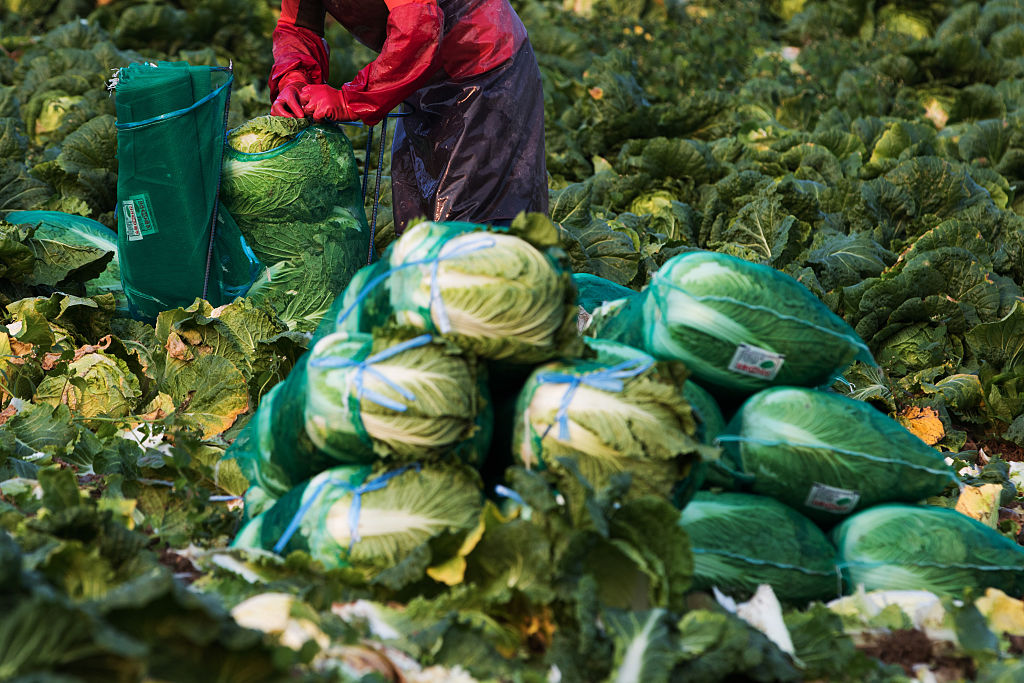
A series of typhoons in South Korea this summer has left the country blindsided by a kimchi catastrophe.
Fields of cabbages — which are usually seasoned with spices this time of year and left to ferment for months to make South Korea’s favorite pungent dish — were wiped out across the country due to the extreme weather, causing prices to surge more than 60%.
“Cabbage prices are going nuts,” said Jung Mi-ae, a mother of two who usually loads up on the vegetable in fall to make her own kimchi. “I had to rub my eyes to see the price tag again because it didn’t make any sense.”
In a normal year, South Korean households buy cabbages and other vegetables in bulk to make kimchi for the next year, a season called “gimjang” and a tradition passed down through the generations for over a century.
But this year, the longest-ever rainy season as well as three big typhoons caused flooding in August and September, damaging crops and disrupting supplies. After Korea Statistics said the nation’s fresh food prices climbed 22% last month to the highest since early 2011, cabbage prices will remain high this month, rising about 8% on average from a year earlier, according to Korea Rural Economic Institute.
It’s not just households who are suffering. Daesang Corp., South Korea’s top kimchi producer, said it has temporarily suspended online sales because of the cabbage shortfall. CJ CheilJedang Corp., another major food company, said it’s looking for alternative supplies to meet demand that’s especially high this year as more people eat at home due to the coronavirus pandemic.
“Cabbage in particular is quite sensitive to climate change and any sort of extreme weather will be detrimental to its output,” said Kim Dajung, a research fellow at the Korea Rural Economic Institute. “While prices are starting to stabilize, uncertainties over price will continue to persist until the gimjang season begins in mid-November.”
There is some hope. The ready-made kimchi shortage should ease because recent favorable weather means cabbage prices will cool off, the agriculture ministry said, adding that purchases of the vegetable, and kimchi production, are expected to stabilize by next month.
That should provide some comfort for people like Lee Neung-hwa, a 64-year-old housewife whose kimchi fridge is starting to look bare. Most South Korean households own a fridge specifically for the condiment to store their kimchi at the ideal temperature.
“Gimjang must go on,” she said. “At this price though, that means less kimchi stew from now on.”
More Must-Reads From TIME
- The 100 Most Influential People of 2024
- Coco Gauff Is Playing for Herself Now
- Scenes From Pro-Palestinian Encampments Across U.S. Universities
- 6 Compliments That Land Every Time
- If You're Dating Right Now , You're Brave: Column
- The AI That Could Heal a Divided Internet
- Fallout Is a Brilliant Model for the Future of Video Game Adaptations
- Want Weekly Recs on What to Watch, Read, and More? Sign Up for Worth Your Time
Contact us at letters@time.com